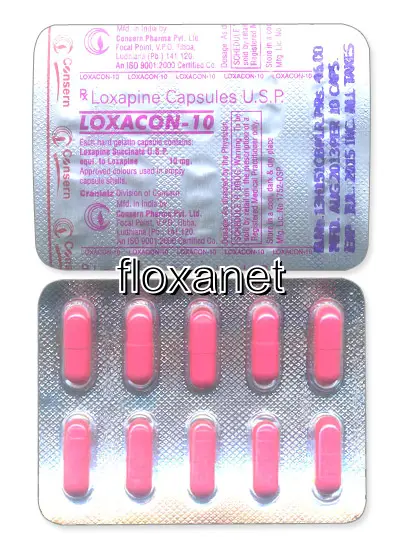| Package | Dosage | Price | Price per Dose | |
|---|---|---|---|---|
| Dosage: 10mg | ||||
| 360 pill | 10mg | $459.41 | $1.28 | |
| 180 pill | 10mg | $249.83 | $1.39 | |
| 120 pill | 10mg | $184.59 | $1.54 | |
| 90 pill | 10mg | $148.50 | $1.65 | |
| 60 pill | 10mg | $106.86 | $1.78 | |
| 30 pill | 10mg | $62.45 | $2.08 | |
| Dosage: 25mg | ||||
| 360 pill | 25mg | $655.12 | $1.82 | |
| 180 pill | 25mg | $367.81 | $2.04 | |
| 120 pill | 25mg | $277.59 | $2.32 | |
| 90 pill | 25mg | $226.23 | $2.51 | |
| 60 pill | 25mg | $165.16 | $2.75 | |
| 30 pill | 25mg | $97.15 | $3.23 | |

Loxapine Description
Overview of Loxapine
Loxapine is a medication primarily used in the treatment of schizophrenia and other severe mental health disorders. It belongs to the class of drugs known as typical antipsychotics, which work by balancing certain chemicals in the brain. By influencing neurotransmitters such as dopamine and serotonin, loxapine helps reduce symptoms like hallucinations, delusions, and agitation. It is available in both oral and inhalation forms, offering some flexibility in management depending on the patient's needs.
How Loxapine Works
The therapeutic effect of loxapine results from its ability to block dopamine receptors in the brain. Excessive dopamine activity is linked to psychotic symptoms, so inhibiting these signals can lead to symptom relief. Additionally, loxapine affects other neurotransmitters, which may account for some of its side effects. Its mechanism is similar to other first-generation antipsychotics, which have a well-established efficacy in managing psychosis but are also known for a higher incidence of certain adverse effects.
Administration and Dosage
Loxapine is typically prescribed after thorough evaluation by a healthcare provider. The medication can be administered orally in the form of capsules or tablets, with dosage tailored to individual needs. It is usually started at a low dose to minimize side effects and gradually increased. In some cases, inhalation formulations are used for quick symptom control, especially during acute episodes. Patients should follow their doctor’s instructions carefully and report any side effects or concerns during treatment.
Effectiveness and User Experience
Many users find loxapine effective in managing their symptoms. It can significantly reduce hallucinations and improve overall mental stability. However, effectiveness varies among individuals, and some may experience incomplete symptom control. Users have reported a range of experiences, from noticeable improvement to mild to moderate side effects. It is important to maintain regular follow-up with healthcare providers to assess progress and adjust dosages if necessary.
Potential Side Effects and Risks
Like other antipsychotic medications, loxapine can cause side effects. Common issues include drowsiness, dizziness, dry mouth, and blurred vision. Some users may experience weight gain or constipation. More serious but less frequent risks include tremors, muscle stiffness, and extrapyramidal symptoms. There is also a risk of metabolic changes and, in rare cases, cardiac issues. Patients should be monitored regularly, and any unusual symptoms should be promptly reported to a healthcare professional.
Precautions and Interactions
Loxapine should be used cautiously in patients with pre-existing conditions such as heart disease, liver problems, or a history of seizures. It may interact with other medications, including other central nervous system depressants, drugs that prolong the QT interval, and certain antidepressants. Combining loxapine with alcohol or narcotics can enhance sedative effects and impair judgment. Healthcare providers will evaluate all medications and health conditions before prescribing loxapine to ensure safety.
Conclusion
Overall, loxapine can be a valuable medication for managing severe psychiatric conditions. Its effectiveness in controlling symptoms is well-documented, though it requires careful oversight due to potential side effects. Patients should maintain regular communication with their healthcare providers to optimize treatment outcomes and minimize risks. As with any medication, adherence to prescribed instructions and prompt reporting of adverse reactions are essential for safe and effective use.
